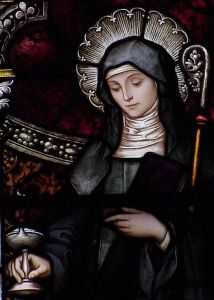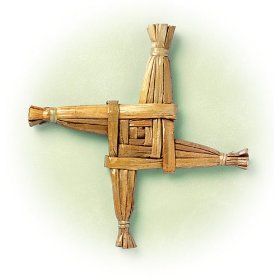Là Fhèill Brìghde
Posted by Groomporter on Jun 12th 2017
Originally published Spring 2003.
Là Fhèill Brìghde
The beginning of February is an important time of year for the Celts, marking the end of winter and the coming of spring. An early Gaelic name for the February festival is Imbolc, or Oímealg. This day was known to the Christians as Candlemas and known in Gaelic as Là Fhèill Brìghde nan coinnlean, "the feast day of Brìghde of the candles." Brìghde is Bridget of Kildare who was born in Ireland around 455 A.D., near what is now the town of Newry. She was the daughter of a druid named Dubhtach. When she became a Christian she founded several religious communities, including the settlement at Cill Dara, or Kildare.

Her popularity spread far and wide, reaching wherever the Gaels settled. St. Bridget came to be thought of as highly as the Virgin Mary, and was known as Muire na nGael, or "Mary of the Gaels." In Scottish Gaelic tradition she was called the banaltrum or nursemaid of Jesus, many believing that she was present at the birth, and assisted Mary as midwife.
St. Bridget was closely associated with cattle and lands. Legend has it that she was raised on the milk of a white cow with red ears, giving her dominion over the cattle and flocks. In one tale she milked a cow until its milk formed the lake Loch an Ais.
Not surprisingly, many of the attributes of St. Bridget can be traced directly to the goddess Brigid; the Celtic goddess of fire, the hearth, smithy, fields, poetry and childbirth; indicating that the new "cult" of the saint absorbed the traditions of the old "cult" at a very early date. Some scholars suggest that the saint is merely a Christianization of the goddess. Others suggest that she was a real person who took on the goddess's attributes. St. Bridget even inherited the holiday from the goddess, Brigid or Bride (Bree-jah). Women about to marry still honor her by becoming (a) Bride for the day.
This was a great feast day and Bridget would visit and bless homes. In Ireland someone was chosen to represent Brìde, usually a woman. That person would come to the door and ask to be let in. If let in, the blessing would be granted.
In County Tyrone, a girl carrying rushes in her hand would knock on the door three times and say, "Téighidh sibh ar mhur nglúna, déanaidh sibh umhlaíocht, agus ligigidh Bríd Bheannachtach isteach." ("Go down on your knees, do homage, and let Blessed Bridget inside.")

In some areas a straw figure representing Brìde, a "Brídeóg," would be carried around by young people singing and dancing and asking for money. In Scotland the "Brìdeag" was a straw figure that was used by young women in a marriage divination ceremony. It is also customary to weave "Brigid's Cross" from straw and hang it upon the hearth.
Bridget's Day also has to do with candles, thus the name Candlemas. Traditionally candles are set in every window of the home and lit at sundown. They burn brightly until dawn, signifying that the sun would shed its light longer now that spring was on its way. This is still practiced in the British Isles and in some parts of the United States.
If the sun was seen on this day winter was over but if the sun was hidden behind clouds winter was still to come. In Manx, the saying goes, "Choud as hig y scell greinney stiagh Laa'l Breeshey, hig y sniaghtey my jig laa Boaldyn." ("As long as the sunshine appears on St. Bridget's Day, the snow will come before May Day.") In some areas it was believed that a burrowing animal, usually a hedgehog, would come out on Bridget's Day to judge the weather. This tradition came with settlers to America. Hedgehogs transferred to groundhogs and Groundhogs' Day was born.
